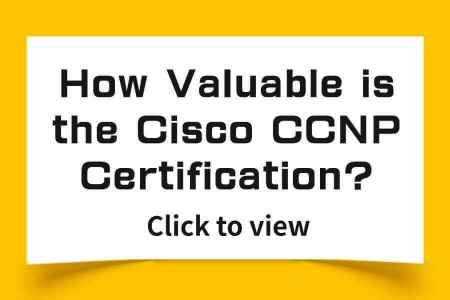Is There a Big Difficulty Gap Between Different Levels of Huawei openEuler Certification?
Update time:2025-09-25
Many candidates ask: “Is the difficulty of Huawei openEuler certification really step-by-step from HCIA to HCIP and then to HCIE?Can I skip HCIA and go straight for HCIP if I already have some Linux knowledge?”

As someone with years of system operations experience, let me break this down clearly.
1.Core Positioning of Each Level
Huawei openEuler certification follows a tiered progression: HCIA (entry) → HCIP (intermediate) → HCIE (expert).Each level targets different career stages:

HCIA openEuler: For beginners or those with no prior background.Focus on mastering basic openEuler operations (command-line usage, simple service deployment).Serves as the entry-level credential.

HCIP openEuler: For professionals with 1–2 years of Linux/openEuler experience.Focus on enterprise-level operations such as high availability, troubleshooting, and performance tuning.Proves solid mid-level skills.

HCIE openEuler: For experts with 3+ years in large-scale enterprise deployments.Requires architecture design, complex troubleshooting, and customized solution abilities (e.g., financial-grade disaster recovery, hardware adaptation).The “gateway” to becoming an architect or technical expert.

In short: HCIA = basic usage → HCIP = efficient operations → HCIE = architecture design.
2.Dimensions of Difficulty Gaps
1)Knowledge Scope
HCIA: Basic operations (commands, user permissions, simple services).
HCIP: Full enterprise scenarios (advanced storage, high availability, optimization, security).Knowledge volume is ~3x HCIA.
HCIE: Architecture & ecosystem integration (clusters, cross-platform adaptation, kernel-level work).About 2x HCIP in scope.
2)Practical Skills
HCIA: Single-node practice (basic commands, service installation).
HCIP: Multi-node tasks (cluster deployment, online scaling, troubleshooting).
HCIE: Large-scale architecture design (compliance-level frameworks, advanced fault analysis).
3)Assessment Focus
HCIA: Basic operations and memory/application skills.
HCIP: Enterprise operations practice and problem-solving.
HCIE: Architecture design and innovative solutions.
4)Preparation Cycle
HCIA: 1–2 months (daily 1–2h).
HCIP: 3–5 months (daily 2–3h).
HCIE: 6–12 months (daily 3–4h).
3.Career Demand vs. Difficulty
HCIA → junior operations roles (basic system tasks).
HCIP → intermediate roles (enterprise operations, troubleshooting).
HCIE → architect/technical expert roles (design & leadership).
As difficulty rises, so does market value and salary level.
4.Smart Preparation Strategy
Suggested Path
Beginners: Start with HCIA → focus on commands & basic deployments.
Intermediate: After 1–2 years’ experience, move to HCIP → emphasize enterprise scenarios.
Expert: With 3+ years’ experience, challenge HCIE → build architecture & troubleshooting depth.
Skipping Levels?
If you have ~2 years of Linux experience, you can attempt HCIP directly, but it’s best to review HCIA-level basics first (commands, permissions, core OS concepts).
Total beginners should not skip HCIA — a weak foundation will make HCIP/HCIE much harder.
Conclusion
Yes — the difficulty gap between HCIA, HCIP, and HCIE openEuler is significant, but it’s a designed progression: from beginner to operator to architect.
HCIA is easy if you practice commands.
HCIP requires both hands-on skills + problem analysis.
HCIE requires experience + architectural thinking.
For professionals aiming to grow in the domestic OS field, this progression is not a barrier — it’s a growth path.Each level achieved means not only earning a certificate, but also building real skills.That skill growth is what ultimately drives higher salaries and career advancement.
With updated dumps + systematic practice, you can shorten your prep time, reduce retake costs, and maximize your chances of passing on the first try.

As someone with years of system operations experience, let me break this down clearly.
1.Core Positioning of Each Level
Huawei openEuler certification follows a tiered progression: HCIA (entry) → HCIP (intermediate) → HCIE (expert).Each level targets different career stages:
HCIA openEuler: For beginners or those with no prior background.Focus on mastering basic openEuler operations (command-line usage, simple service deployment).Serves as the entry-level credential.
HCIP openEuler: For professionals with 1–2 years of Linux/openEuler experience.Focus on enterprise-level operations such as high availability, troubleshooting, and performance tuning.Proves solid mid-level skills.
HCIE openEuler: For experts with 3+ years in large-scale enterprise deployments.Requires architecture design, complex troubleshooting, and customized solution abilities (e.g., financial-grade disaster recovery, hardware adaptation).The “gateway” to becoming an architect or technical expert.
In short: HCIA = basic usage → HCIP = efficient operations → HCIE = architecture design.
2.Dimensions of Difficulty Gaps
1)Knowledge Scope
HCIA: Basic operations (commands, user permissions, simple services).
HCIP: Full enterprise scenarios (advanced storage, high availability, optimization, security).Knowledge volume is ~3x HCIA.
HCIE: Architecture & ecosystem integration (clusters, cross-platform adaptation, kernel-level work).About 2x HCIP in scope.
2)Practical Skills
HCIA: Single-node practice (basic commands, service installation).
HCIP: Multi-node tasks (cluster deployment, online scaling, troubleshooting).
HCIE: Large-scale architecture design (compliance-level frameworks, advanced fault analysis).
3)Assessment Focus
HCIA: Basic operations and memory/application skills.
HCIP: Enterprise operations practice and problem-solving.
HCIE: Architecture design and innovative solutions.
4)Preparation Cycle
HCIA: 1–2 months (daily 1–2h).
HCIP: 3–5 months (daily 2–3h).
HCIE: 6–12 months (daily 3–4h).
3.Career Demand vs. Difficulty
HCIA → junior operations roles (basic system tasks).
HCIP → intermediate roles (enterprise operations, troubleshooting).
HCIE → architect/technical expert roles (design & leadership).
As difficulty rises, so does market value and salary level.
4.Smart Preparation Strategy
Suggested Path
Beginners: Start with HCIA → focus on commands & basic deployments.
Intermediate: After 1–2 years’ experience, move to HCIP → emphasize enterprise scenarios.
Expert: With 3+ years’ experience, challenge HCIE → build architecture & troubleshooting depth.
Skipping Levels?
If you have ~2 years of Linux experience, you can attempt HCIP directly, but it’s best to review HCIA-level basics first (commands, permissions, core OS concepts).
Total beginners should not skip HCIA — a weak foundation will make HCIP/HCIE much harder.
And here’s the key: you don’t need expensive training courses.Instead, use high-quality dumps.Updated exam dumps can help you quickly identify weak spots, master key topics, and boost pass rates.With the right resources, even skipping levels becomes much more realistic.
Conclusion
Yes — the difficulty gap between HCIA, HCIP, and HCIE openEuler is significant, but it’s a designed progression: from beginner to operator to architect.
HCIA is easy if you practice commands.
HCIP requires both hands-on skills + problem analysis.
HCIE requires experience + architectural thinking.
For professionals aiming to grow in the domestic OS field, this progression is not a barrier — it’s a growth path.Each level achieved means not only earning a certificate, but also building real skills.That skill growth is what ultimately drives higher salaries and career advancement.
With updated dumps + systematic practice, you can shorten your prep time, reduce retake costs, and maximize your chances of passing on the first try.
I'm your man who have the 100% valid dumps , buy it now for 50% off to clear your exam!
Click it ↓↓

Hot article
-
 1
1 IT Certification News: High Scores Across Domains,
上传:2025-09-30
-
 2
2 How Valuable is the Cisco CCNP Certification?
上传:2025-09-30
-
 3
3 What Does the Huawei Cloud Computing HCIP Exam Cove
上传:2025-09-30
-
 4
4 How Valuable is the Huawei Euler HCIE Certification
上传:2025-09-30
-
 5
5 Which Certifications Can You Pursue with Linux?
上传:2025-09-30








